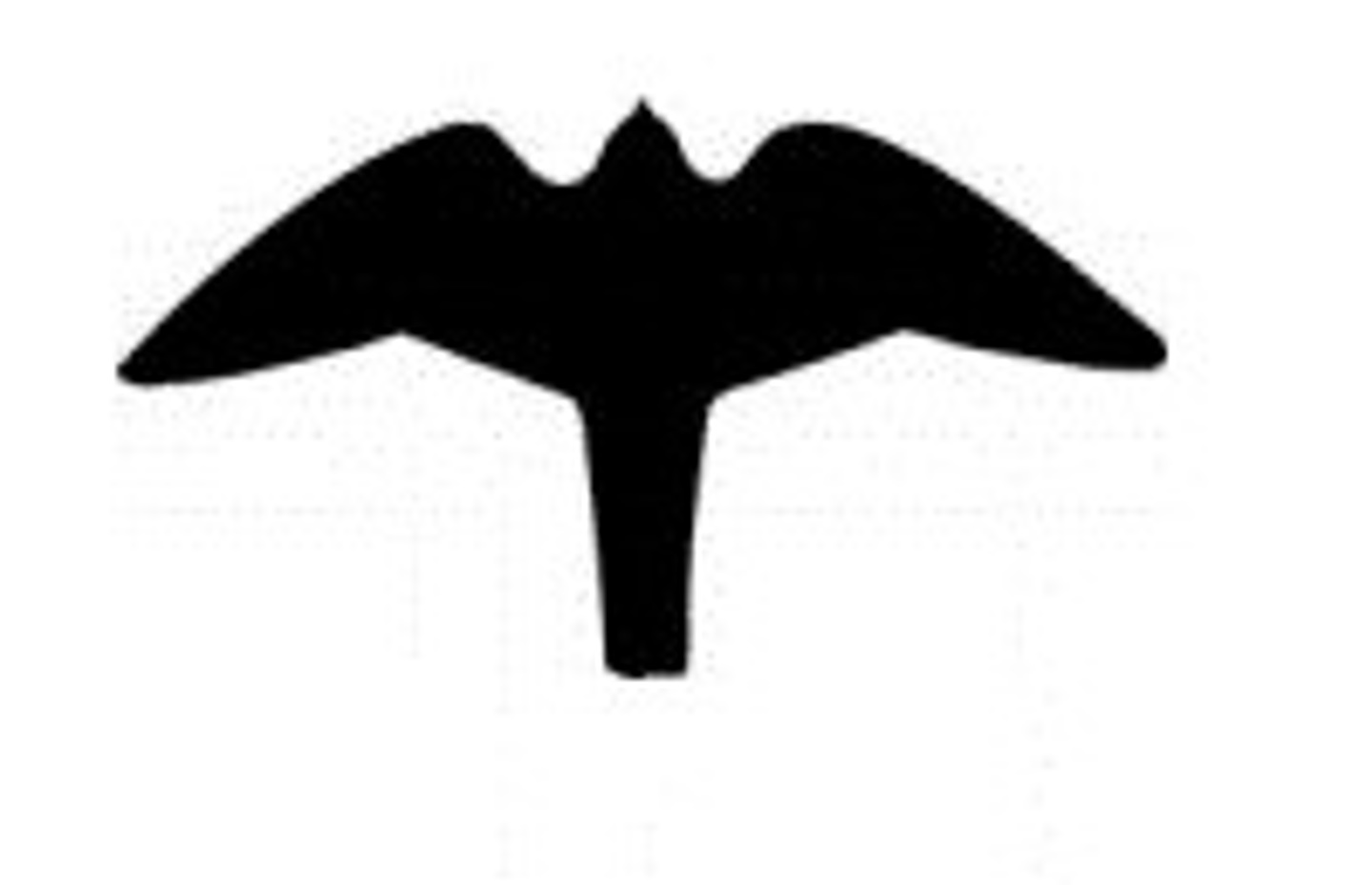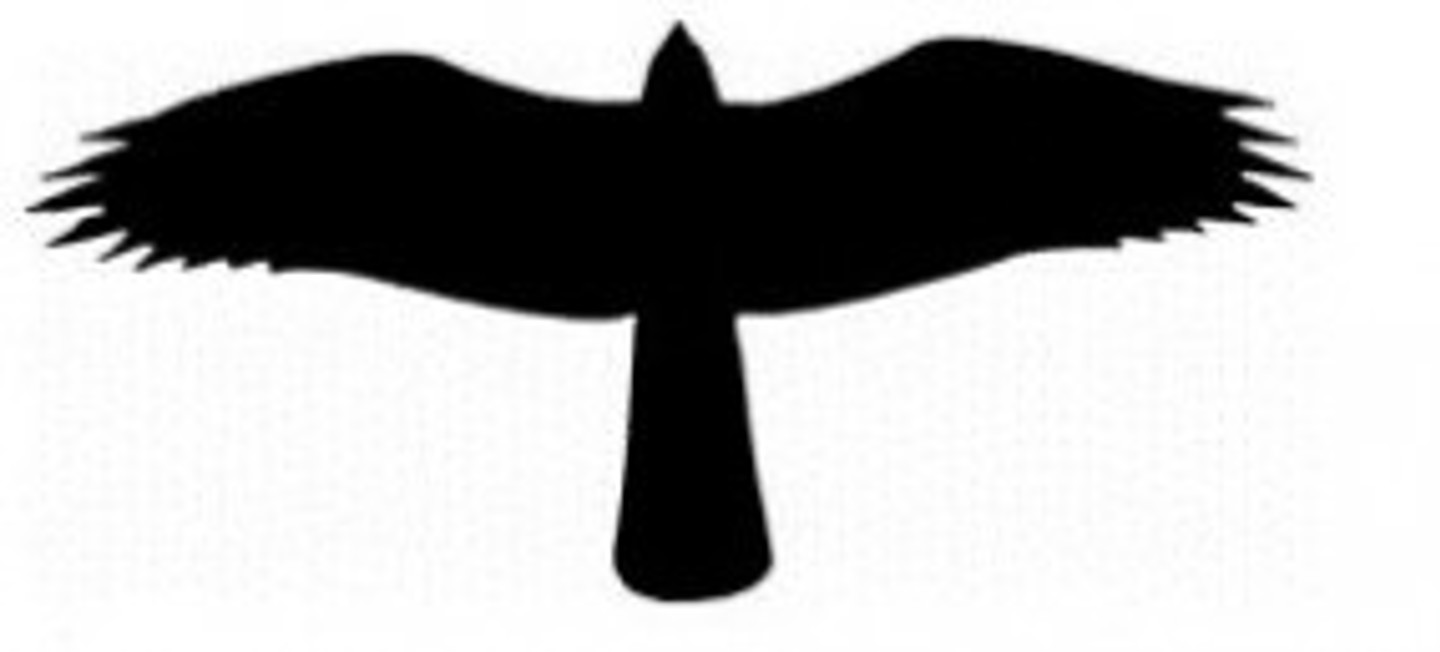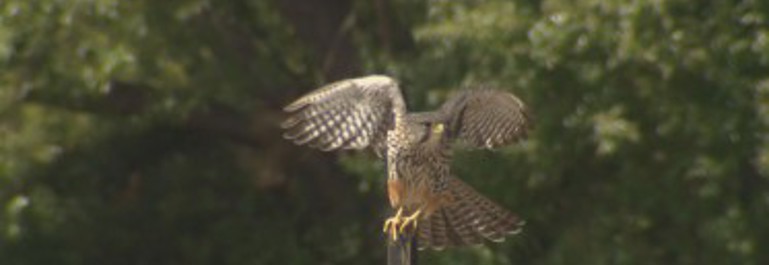We have formed a conservation partnership with the Department of Conservation to reduce the risk of kārearea/New Zealand falcons being electrocuted when they perch on our overhead power equipment.
About the Kārearea
The kārearea is one of our most spectacular birds. They are New Zealand's only endemic raptor, or bird of prey, and are capable of flying at over 100km an hour! For Ngāi Tahu, kārearea are taonga (treasured) and hold cultural importance. The kārearea's cry is said to foretell the weather, as in the saying:
Ka tangi te kārewarewa ki waenga o te rangi pai, ka ua āpōpō.
Ka tangi ki waenga o te rangi ua, ka paki āpōpō.
When a kārearea screams in fine weather, the next day there'll be rain.
When it screams in the rain, the next day will be fine.
Kārearea
The kārearea is a rare species of falcon, only found in New Zealand. The population is uncertain, however, according to the Department of Conservation it is likely between 5,000 – 8,000.
They are strictly territorial, spread out over large areas and slow to reproduce. Ecologists say the kārearea is at risk of extinction.
It is one of over 40 different species of falcons found around the world, like the fastest of all, the Peregrine Falcon.
While kārearea prefer to live in forests and shrubland away from people, you may spot them when they're searching for food, especially in winter. Being carnivores, small garden birds, insects and rodents around our farms and homes can be easy prey for a hungry kārearea.
You'll find the kārearea on the $20 note and it's often used on emblems and logos across the country.
Spot the difference
Kārearea
Kārearea can be easily mistaken for harriers/hawks.
The best way to spot the difference is when the kārearea is in flight. It has shorter, more rounded wings than hawks and is most often seen making fast wing beats for speed or flying low to the ground trying to surprise its prey. They also have a piercing kek-kek-kek call. They are rarely seen as they camouflage themselves in trees or on rocky outcrops waiting to ambush their prey.

Kārearea or New Zealand Falcon
Australasian Harrier/hawk
Harriers/hawks, on the other hand, are generally seen with their longer wings held open in a slight V-shape, slowly circling the ground in search of food or prey. They mostly stay quiet to better sneak up on their prey but make a simple kee-a call that can be heard in late winter and spring. They're often seen when they're searching for food, especially on road trips around Otago. Hawk spotting is a great game to play in the car!

Australasian Harrier/hawk
What's the risk?
When flying around built-up areas or towns, kārearea are at risk of electrocution from overhead power equipment. Kārearea like to perch in trees, sitting there to watch and wait for their next meal. They think power poles are another good spot for spying their prey. They often perch dangerously close to live power equipment, in the same way they perch amongst the leaves. When kārearea prepare for flight, they stretch out their half-metre wings that can touch live power equipment, giving them an electric shock.
What's being done?
Our partnership with the Department of Conservation means we can reduce the risk of kārearea electrocutions on our network and raise awareness of other risks to this rare and beautiful bird.
So far, we have pinpointed the components of overhead power equipment, including transformers and lightning arrestors, that could be hazardous to kārearea.
We have already retrofitted insulation to four sites in Glenorchy.
We have committed to build all future overhead installations to the new design standard to reduce the electrocution hazard across our network. We'll also share our developing knowledge on kārearea safety with other electricity networks in the hope that other parts of the country can be made safer for kārearea too.
How can you help?
Kārearea face multiple threats. With your help, we can protect this special bird.
- Community predator control helps the kārearea by eliminating introduced rats, stoats and possums. This is the same for all native animals.
- If you manage farmland, consider the potential impact on the kārearea's habitat before clearing pockets of native shrubland. These habitats are important for nesting and hunting.
- If there is a kārearea defending a nest near your home or in a public place, or attacking chickens, then please report this to your nearest Department of Conservation office so they can help.
- If they attack, do not attempt to strike or hit the bird. Even a slight injury may hinder its ability to hunt and fend for itself and its young. Move away and they will leave you alone. They are protecting their homes.
How to report falcon sightings
All public observations of kārearea are helpful to better understand where this rare native bird is living and breeding.
If you find a kārearea under a power line or overhead transformer, please record an accurate pole location and make a report here. [mailto: [email protected] ]
The Department of Conservation informs us of the location for corrective action.
If you’d like to share this information, we’ve created a brochure.
Together we can help protect the kārearea for generations to come.
